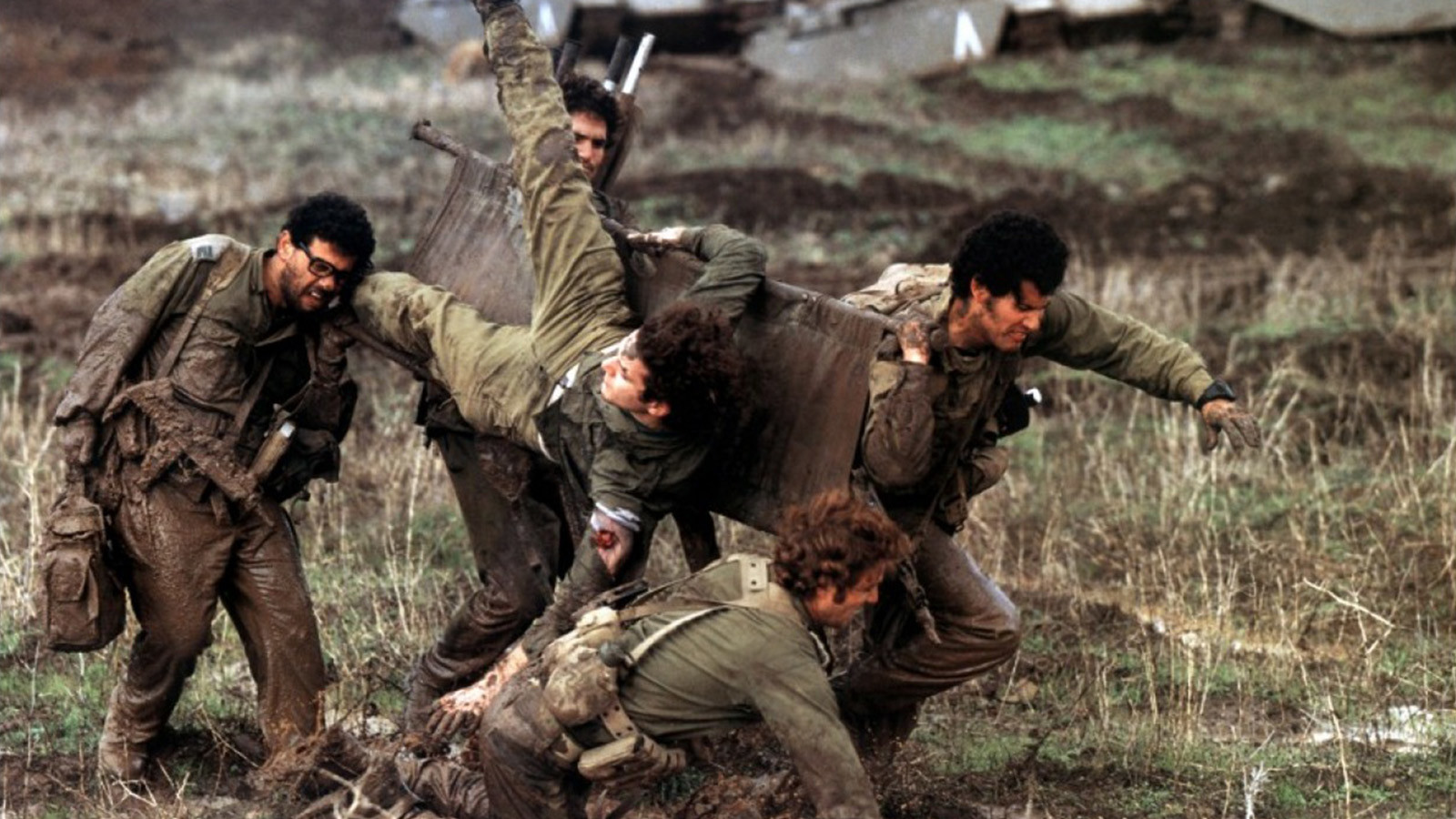
In the Line of Fire
In the opening sequence of House (Bait, 80), a documentary Amos Gitai made for Israeli TV that was never aired, several sledgehammer-wielding Arab workers drive iron spikes into a stone slab at a quarry. An intertitle notes that, for security reasons, they’re not allowed to handle explosives. As the film gradually informs us, the stones they’re laboriously extracting are intended for a house once owned by Palestinians, taken over as “absentee property” by the new Israeli state after its owners fled during the 1948 War of Independence. We learn that the house was subsequently rented to Algerian Jews, and is now being renovated for an Israeli academic. The film takes us through the many inequities, tragedies, and ironies that make up the story of this dwelling, and ends back at the quarry. The workmen rhythmically striking the iron spikes with their sledgehammers create a clanging, impromptu, almost avant-garde melody that could be Amos Gitai’s anthem, or dirge, for the intractable conflict between Israelis and Palestinians over land, which ultimately means: over house and home.

It would be overly simplistic to claim that one moment in an early film reveals the core of a filmmaker’s life work. But there’s no doubt that the quarry scene—with its elements of labor and landscape, of conflict and subjugation, of natural sound telling us the larger story beyond the image—offers a key to Gitai’s 25-year career. And his life as well—the geopolitical struggle encapsulated in those quarry shots has also dominated the filmmaker’s personal fate. As a young student of architecture, Gitai was called up for service in Israel’s 1973 Yom Kippur war and assigned to an air-force rescue unit. A Syrian missile shuck the helicopter in which he was riding, and although the pilot managed to land safely, one crew member was killed and five others gravely wounded. Gitai’s wounds were only a little less serious. Kippur (00) his latest and most accomplished film, dramatizes this experience and elevates him to a higher level of international recognition.
After his recovery, Gitai continued his architectural studies, but gradually became interested in filmmaking. House was his eleventh documentary (all were less than an hour in length). It was also his second produced for, and banned by, Israeli television. (His 1977 film Political Myths was suppressed because of its scenes dealing with Israel’s political and religious right-wing extremes.) Surely there’s no contradiction between Gitai’s military record and his consistent critique of some of Israel’s dominant ideologies and policies. Yet in practice, the identity of hero/dissenter is fundamentally anomalous: it courts danger. On the eve of Israel’s invasion of Lebanon, Gitai decided to shoot a documentary in the West Bank called Field Diary (Yoman Sadeh, 82). The film’s purpose was to see “how the occupation manifests itself,” as a subtitle explains. Israeli soldiers treated the filmmaker as one of the enemy: Field Diary’s dominant motif is soldiers telling Gitai not to film, covering up the lens, threatening to break the camera. “I find you suspicious,” one soldier tells him. It’s an opinion that many Israelis have shared over the years. Gitai felt effectively expelled from Israel after he made Field Diary, and went into self-exile in France for much of the following decade. He became part of the European filmmaking community, found production backing and on-air exposure from television networks in several countries, made films in far corners of the world that still offered the opportunity to explore his familiar Middle Eastern themes in other settings, and tried his hand at fiction filmmaking. His reputation since then has grown steadily, but slowly. In 1993 the British Film Institute published a collection of articles on Gitai’s work. But his films are barely known in the U.S. Kadosh (99), a controversial fiction film on gender relations in Jerusalem’s Orthodox community—and the last in a trilogy of stories set in Israel’s three major cities—was his first work to receive stateside commercial distribution. Currently, none of his films are listed for sale or rental in video or DVD formats, although that is about to change.
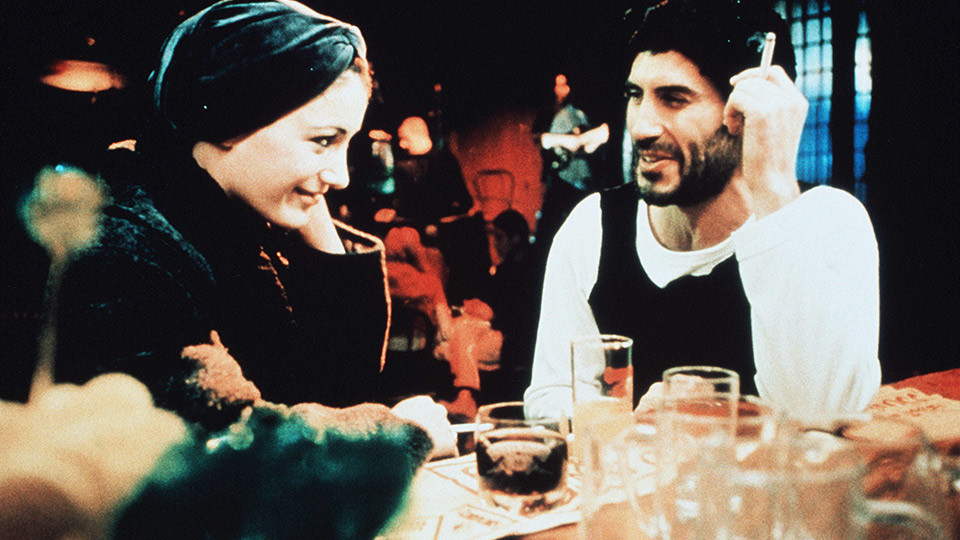
Kadosh
Given the lack of access to most of his work (I have been able to see only about a third of his 38 titles), any generalization about Gitai’s career to date is necessarily provisional. Yet the available films provide an ample array of continuities, motifs, and abiding concerns, the kind of coherence one finds with all good filmmakers. One continuous thread that runs throughout his work is the city of Haifa, where Gitai was born in 1950 and where his father, a German Jewish architect who studied at the Bauhaus and worked with Mies van der Rohe before the Nazi rise to power, had been employed as a designer, builder, and urban planner. Gitai’s first film on Haifa was Wadi Rushmia (78), set in a Rushmia valley (wadi) neighborhood where Israeli Arab and Jewish families lived in close proximity. Wadi (80) returns to the valley and centers on a Jewish woman and an Arab man who live together, but also touches on another Haifa valley community where city authorities are destroying Arab homes. Wadi 1981-1991 (91) combines the 1980 film with new footage pessimistically reporting on the deleterious effects of the Israeli-Palestinian conflict on personal lives, including the breakup of the couple depicted in the earlier film. In The Arena of Murder (Zirat Ha’Rezach, 96), Gitai’s impassioned and self-reflective portrait of Israel after Yitzhak Rabin’s assassination, his restless roaming takes him, among other places, to the site where his helicopter crashed and back to Haifa, and once again to images of destroyed older dwellings that seem to represent the lost past of two peoples who once coexisted.
The first two documentaries Gitai made after resettling in France in the early Eighties—works that were financed by television entities in France, Finland, Holland, and Sweden, as well as Channel 4 in Britain—pursued the themes of exploited labor and neocolonial power first articulated in House. Pineapple (Ananas, 84) traces the history of the Dole pineapple company back to the seizure of Hawaii as a United States colony in the nineteenth century. The film shows how Filipinos were imported to work the Hawaiian pineapple plantations, until higher U.S. wage scales (Hawaii having become the 50th state in 1959) made it cheaper to move the plantations to the Philippines and keep the low-paid workers at home. Bangkok Bahrain (aka Labour for Sale, 84) investigates the cruel economic realities of Thai rural life where poverty destroys families, forcing women into the city to work as prostitutes and male laborers to migrate to the Gulf countries for low-paying construction jobs.
Gitai returned to Israel with Berlin-Jerusalem (89), a fiction film drawn from historical events. Along with the more recent documentary Orange (Tapuz, 98), Berlin-Jerusalem focuses in part on the idealistic hopes of Zionist settlers in Palestine that agricultural work would foster a new, healthier, stronger, more equitable Jewish society. In reality, as Gitai depicts it, the kibbutz movement is inextricably tied to the expropriation of Arab land. Similarly, in Orange, the pioneering days of orange cultivation (represented by a montage of early photographs) give way to an agribusiness exploitation of Arab labor. This perspective is driven home at the end of Berlin-Jerusalem by a long tracking shot of a woman who begins her walk along a deserted country road in the Thirties and steps seamlessly into the drab side streets of an Israeli city in the Eighties.
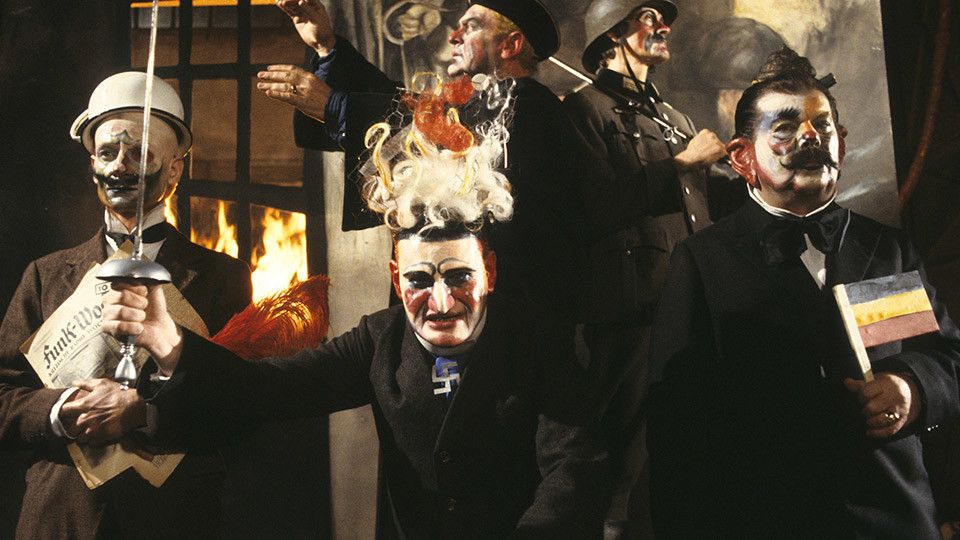
Berlin-Jerusalem
In the early Nineties Gitai explored fresh subjects and experimented with new forms, but lost some of his edge and viewpoint, making three basically journalistic documentaries for European television on the resurgence of right-wing movements in several countries (these films have retrospectively been grouped together as his “Neo-Fascist Trilogy”). In the Valley of the Wupper (93) investigates the aftermath of a 1992 murder committed by neo-Nazis in Wuppertal, Germany; Queen Mary (94) concerns life in the Paris suburb of Joinville; and In the Name of the Duce (94) covers Alessandra Mussolini’s campaign for the mayoralty of Naples. Three other mixed-genre films—part fiction, part nonfiction, diary, and theater—explore the theme of the Golem in Jewish history and mythology. Several additional films document theater performances Gitai directed.
The assassination of Israeli prime minister Yitzhak Rabin in November 1995 rekindled Gitai’s political and polemical energies. The Arena of Murder, subtitled An Israeli Film, seems to have been made in a white heat of anger and anguish about his country. Foregrounding his own emotions, he records himself driving compulsively along deserted highways—south to Gaza, north to the Golan Heights. He revisits the place where his helicopter was shot down, and returns to view the destruction of the old Arab sections of Haifa. In one of his long night drives, a companion asks him a provocative question: “So now you’ll stop making films?” Gitai replies, “No, but I feel like making different kinds of films. Less formal. I’m looking for something more minimalistic, that touches a nerve, but it’s hard to articulate in the form of cinema.” Perhaps he already had this new idea for touching a nerve when these words were spoken.
Gitai followed The Arena of Murder with a decisive turn toward fictional filmmaking. Also significantly, he turned to a new cinematographer. Gitai had used the legendary French DP Henri Alekan, then in his sixth decade as a cinematographer, to shoot the historical fictions of the previous decade. Now he enlisted the equally distinguished Straub-Huillet veteran Renato Berta for the more “minimalistic” look he wanted. Berta has photographed all four of Gitai’s recent films, beginning with Things (Zihron Devarim, 96), set in Tel Aviv and based on a novel of the same title by the Israeli writer Ya’akov Shabatai. This work inaugurated a fictional City Trilogy that also included Day after Day (Yom Yom, 98), about Haifa, and Kadosh, about Jerusalem.
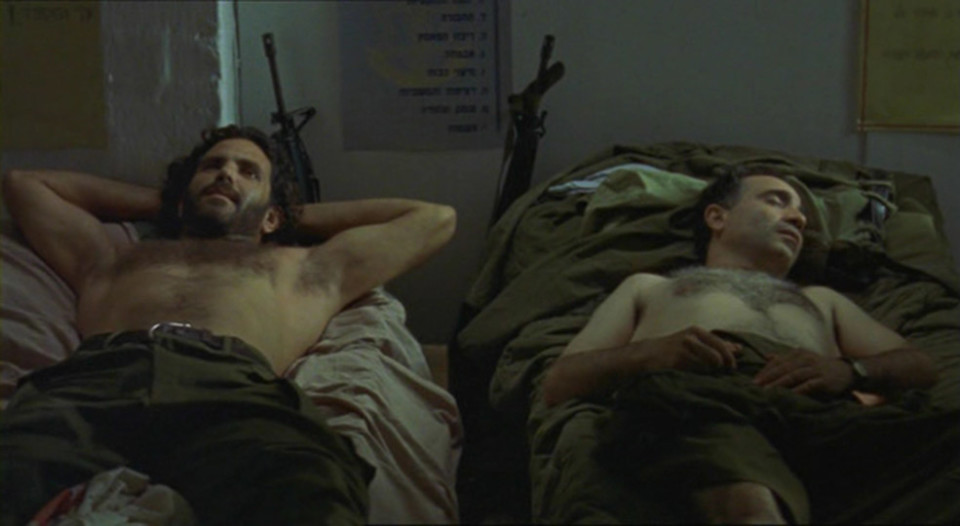
Day after Day
Beautifully shot by Berta with a rich but muted color palette, Kadosh was chosen for the official competition at Cannes, the first Israeli film selected since the Seventies. As Gitai’s most widely screened film, Kadosh won both admiration and sharp criticism—the criticism predictably coming from the Orthodox community, which disputed the film’s portrayal of Orthodox men acting with brutal lack of feeling toward their wives. Kadosh also drew criticism from others who saw it as more of a bald accusation than an effective dramatization of its themes.
A year later, Kippur returned Gitai to the Cannes competition, and also became the first Israeli film invited to the New York Film Festival. Its subject signaled another, more painful dimension to Gitai’s search for new approaches to filmmaking, traceable back to the moment in The Arena of Murder where another, unidentified survivor of his downed helicopter recounts the action, as Gitai roams silently in the background. The tone and style of Kippur are indeed strikingly different from his previous work. In Kippur there is little if any sense of argument, condemnation, or anger—and its anguish, of which there is a great deal, exists on a plane that exalts all its human subjects, as it simultaneously reduces them to cogs in the inhumane machinery of war.
Among numerous acknowledgments in the film’s closing credits, the most prominently listed is the late director Samuel Fuller. In his Paris years Gitai became friendly with Fuller, who was also living there at the time, and the American filmmaker acted in several of Gitai’s Golem films and theater pieces. A WWII combat veteran, Fuller was the master of a certain kind of war film, exemplified by his 1951 Korean War titles The Steel Helmet and Fixed Bayonets and his memoir-like The Big Red One (80). These films eschewed the doings of military and political bigwigs, rendering war through the moment-by-moment experience of men at the front, under fire. Kippur was clearly made under the sign of Fuller’s legacy.
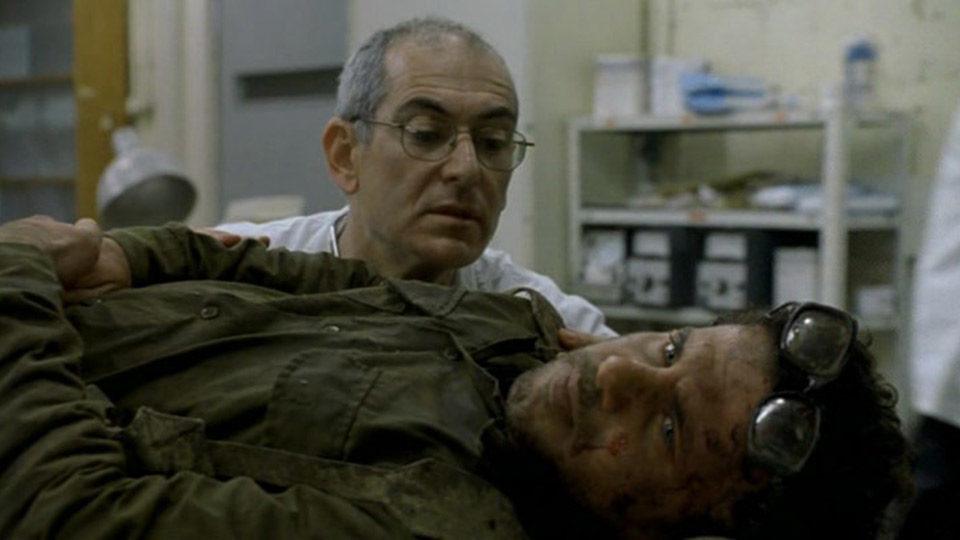
Kippur
Kippur is Gitai’s personal war story, made into fiction by simply changing the names. His counterpart is Weinraub, which is Gitai’s father’s family name and his own middle name. Portrayed by Liron Levo, Weinraub is making love on the Day of Atonement when a siren calls him to war. Driving a battered Fiat, he picks up his friend Ruso (Tomer Ruso—the other main characters are named for the actors who play them) and they drive north toward the Syrian front to join their unit. After maneuvering tanks block their route, they encounter a physician (Uri Ran Klausner) trying to find his air-force rescue operation, and decide to join him. The chief officer tells them, “We’re trying to organize this mess,” and assigns Ruso, also an officer, to head a seven-member combat team to bring back wounded men by helicopter.
Kippur, even more than Fuller’s psychologically realistic but sometimes studio-bound films, brings home the visceral feeling of war. Throbbing helicopter rotors and grinding tank engines blast the eardrums and render thought, let alone speech, nearly impossible. Berta’s camera takes us up in the air with the rescuers and holds us breathlessly one step behind them as they drop to the ground and gather up the wounded. We crouch beside the doctor, struggle with the stretcher-bearers, race across the tarmac to waiting ambulances.
The film’s most remarkable sequence adopts a different visual strategy. Trying to rescue a wounded man, the team is mired in a battlefield of deep, thick mud. They slip, curse, fall, hold him, drop him. The camera this time maintains a discreet distance, giving us a slightly detached viewpoint from which to absorb their frustrating efforts. Then it slowly pans forward, moving the viewer closer and closer in space and time to the excruciating moment when it becomes clear that they have failed—the soldier has died. The re-creation of the missile striking the helicopter is another tour de force, photographed without the enhancement of special visual effects.
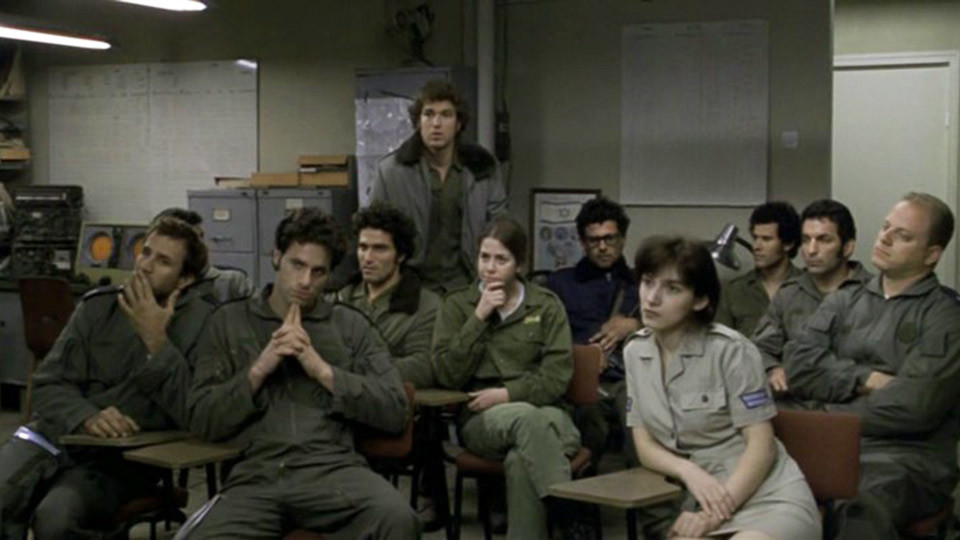
Kippur
Co-written with Maria-José Sanselme, a French writer and cultural attaché in Israel, Kippur remains true to the ethic of the frontline film, and sets aside Gitai’s familiar polemical stance. The enemy is not seen or even commented upon (when you think about it, this may be a form of polemics by abstention). Soldiers make nasty cracks about the Israeli leaders Golda Meir and Moshe Dayan, but it seems more like grunts’ grumbling than a political point-scoring. After the helicopter survivors are taken to a hospital, Weinraub returns to his woman in the final scene and they begin once again to make love. They cover themselves in brightly colored paints, in the film’s most tendentious, obvious, and perhaps most overtly political statement—that love is preferable to war. Whether this coda seems profound or unnecessary, however, Kippur otherwise pulls off one of cinema’s most elusive feats: it grounds the universal in the particular, so that henceforward we cannot comprehend one without being reminded of the other.







